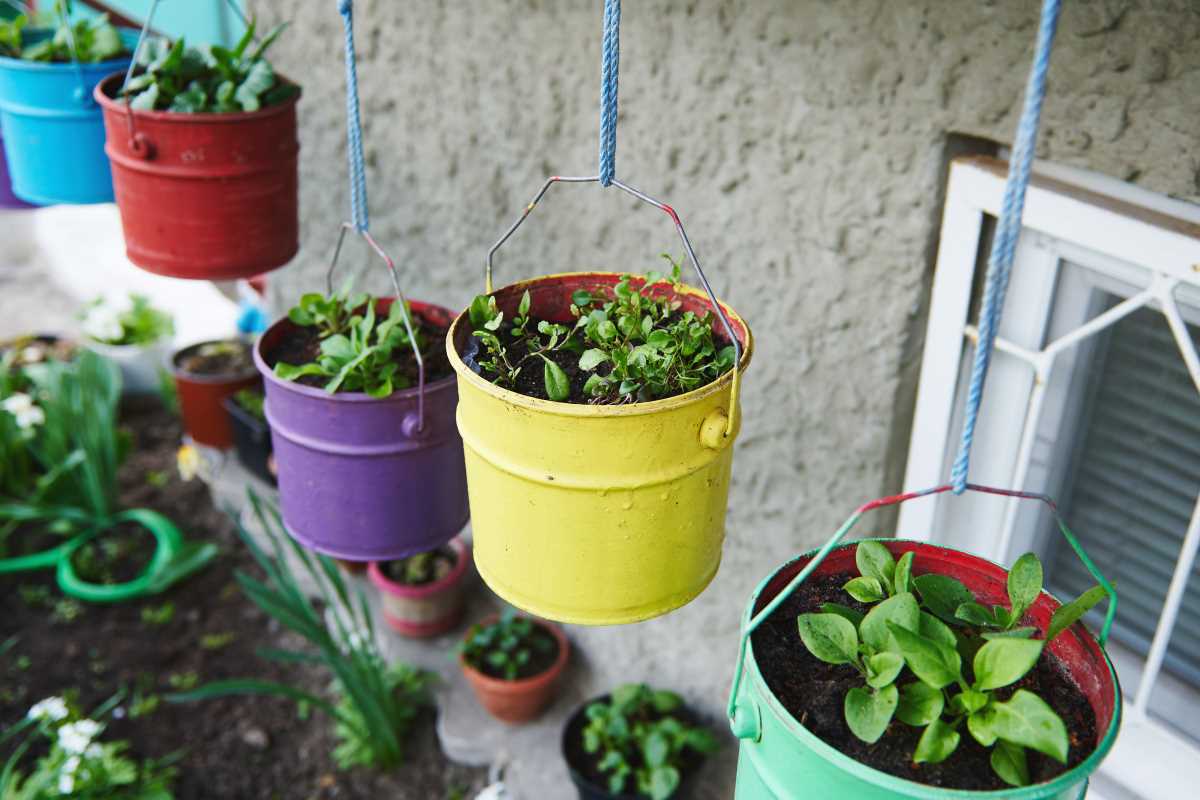Imagine transforming your balcony into a verdant oasis, where the joys of gardening seamlessly blend with the rhythm of urban life. With a vertical herb garden, you can make the most of limited space, creating a thriving green sanctuary that infuses your cooking with fresh, aromatic flavors. This clever gardening technique not only brings a touch of nature to your home but also offers the convenience of having a variety of herbs at your fingertips. As you nurture your vertical garden, you'll find your balcony becomes a delightful retreat, enhancing both your culinary adventures and your connection to the natural world.
Choosing the Right Herbs
- Basil
- Mint
- Rosemary
- Thyme
- Parsley
- Cilantro
- Oregano
- Chives
Selecting the right herbs is crucial for a successful vertical garden. Opt for herbs that grow well in confined spaces and can handle the vertical arrangement. Consider the herbs you frequently use in your cooking to ensure that your garden remains both practical and rewarding.
Selecting a Vertical Garden Structure
Various structures exist for creating a vertical herb garden, each with its own benefits. From wall-mounted planters to freestanding towers, your choice depends on your balcony's layout and your personal preferences.
- Space availability and balcony size
- Weight capacity of the balcony railings or walls
- Ease of access for planting and harvesting
- Aesthetics and how it complements your balcony décor
- Material durability, especially in varying weather conditions
Carefully assessing these factors helps you choose a structure that supports your herbs and enhances the visual appeal of your outdoor space.
Planting and Arrangement Tips
- Prepare your vertical garden structure by ensuring it has adequate drainage to prevent waterlogging.
- Fill each planter or pocket with high-quality potting mix suitable for herbs.
- Plant herbs with similar sunlight and watering needs together to simplify maintenance.
- Position taller herbs at the top and shorter ones at the bottom for easy access and better light distribution.
- Leave enough space between plants to allow for growth and air circulation.
- Label each herb to keep track of what you’ve planted and its care requirements.
- Water the herbs thoroughly after planting and establish a regular watering schedule.
These steps help you create a well-organized and flourishing vertical herb garden that looks great and provides a steady supply of fresh herbs for your kitchen.
Maintaining Your Herb Garden
Proper maintenance keeps your vertical herb garden healthy and productive. Regular care ensures that your herbs remain vibrant and flavorful throughout the growing season.
- Watering: Keep the soil consistently moist but not soggy. Check moisture levels regularly, especially during hot weather.
- Pruning: Trim herbs regularly to encourage bushier growth and prevent them from becoming leggy.
- Pest Control: Inspect plants for pests like aphids or spider mites and use natural remedies or organic pesticides to manage infestations.
- Fertilizing: Feed your herbs with a balanced, water-soluble fertilizer every few weeks to replenish nutrients.
- Sunlight: Ensure your garden receives adequate sunlight, typically 6-8 hours a day, depending on the herb variety.
- Rotation: Occasionally rotate the garden structure to promote even growth and exposure to sunlight.
By staying on top of these maintenance tasks, your vertical herb garden remains a flourishing source of fresh herbs for your balcony kitchen endeavors.
Creative Cooking with Fresh Herbs
Having a vertical herb garden on your balcony opens up a world of culinary possibilities. Fresh herbs can turn simple dishes into extraordinary meals with their vibrant flavors and aromas.
- Garnish your salads with freshly chopped parsley or cilantro for an added burst of flavor.
- Add basil leaves to your homemade pizzas or sauces for an authentic taste.
- Use rosemary and thyme to season roasted vegetables or grilled meats.
- Mash fresh mint into drinks or desserts for a refreshing twist.
- Incorporate chives into creamy dips or creamy potato dishes for a mild onion flavor.
Experimenting with different herbs inspires new recipes and enhances your balcony cooking, making each meal a delightful experience.
Integrating Vertical Gardens in Urban Living
Urban environments often come with space constraints, but integrating vertical gardens can significantly enhance the greenery and functionality of small living areas. By optimizing vertical space, you create lush, green walls that produce herbs and improve air quality while adding aesthetic value to your home.
Embracing urban rooftop gardening techniques can further extend your gardening efforts beyond balconies, making the most of every available inch in city living.
Creating a vertical herb garden on your balcony enhances your urban space with beauty and practicality, offering fresh flavors and the joy of cultivating a personal green oasis.






.jpeg)
